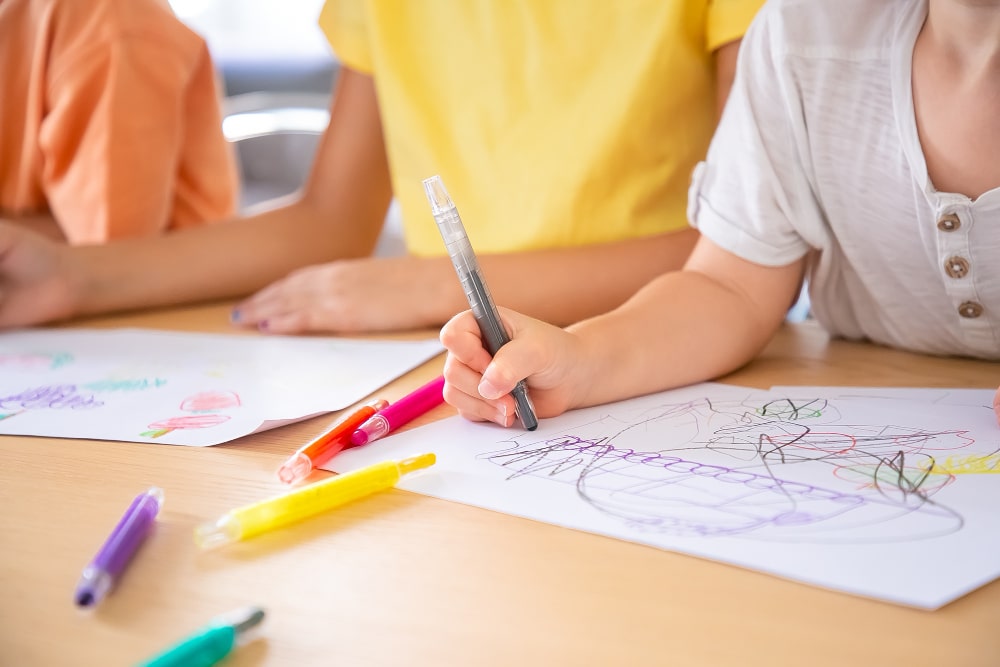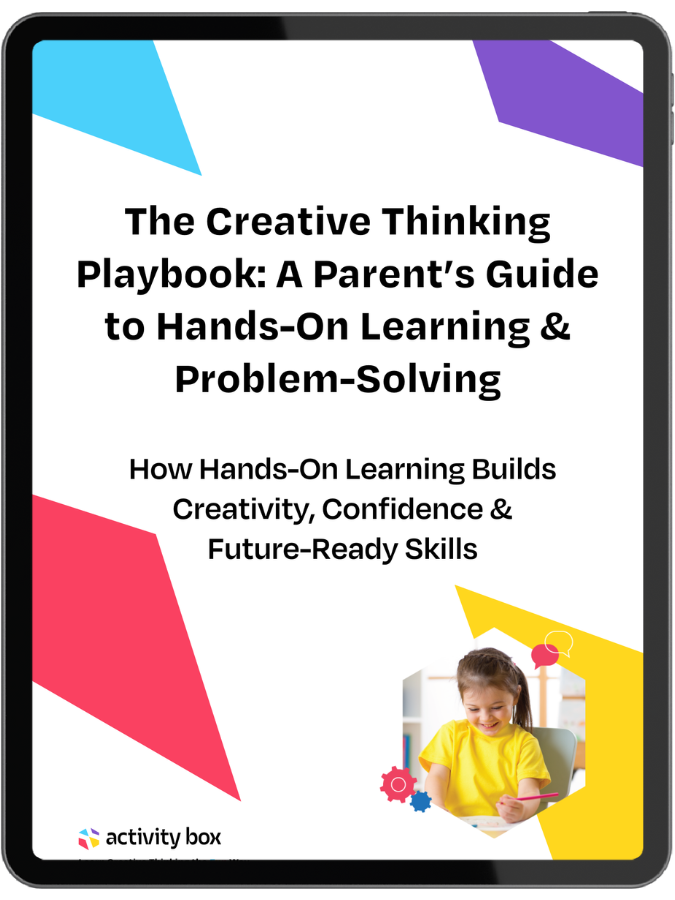
The Power of Creative Play in Building Emotional Intelligence in Children
Key Takeaways
| Why This Topic Matters | Emotional intelligence (EQ) helps children understand and express emotions, build relationships, and navigate social situations. |
| How Creativity Enhances EQ | Creative activities encourage self-expression, emotional regulation, and empathy. |
| The Role of Play-Based Learning | Role-playing, storytelling, and art help children understand emotions and develop interpersonal skills. |
| Social & Emotional Growth | Creativity fosters resilience, patience, and communication skills. |
| Practical Applications | Parents and educators can nurture emotional intelligence through creativity-driven activities. |
Why Emotional Intelligence Matters in Early Childhood
Did you know that children with strong emotional intelligence (EQ) tend to have better relationships, perform better in school, and manage stress more effectively?
Creative play is one of the best ways to nurture emotional intelligence in young children. Through art, role-playing, and storytelling, children learn to express emotions, develop empathy, and build social connections.
This article explores the powerful link between creativity and emotional growth and provides practical ways to support your child’s EQ through play.
📖 Related Read: 5 Key Benefits of Play-Based Learning
What is Emotional Intelligence?
Emotional intelligence (EQ) is the ability to:
- Recognize and manage emotions
- Understand the feelings of others (empathy)
- Develop healthy relationships
- Regulate emotions in different situations
🔬 Research Insight:
According to psychologist Daniel Goleman, children with strong EQ are better at handling stress, solving conflicts, and forming friendships.
📖 External Source: Learn more about Daniel Goleman’s EQ model.
The Role of Creative Play in Creativity and Emotional Intelligence
How Creative Activities Support Self-Expression
Children often struggle to put their emotions into words, but creativity provides a safe outlet for self-expression.
🔍 Example:
A child drawing a sad face may be expressing frustration or sadness they find difficult to verbalize.
Creativity-Driven Self-Expression Activities:
- Painting emotions – Using colors to express different moods.
- Role-playing games – Acting out different scenarios to process feelings.
- Storytelling – Creating characters that experience joy, fear, or sadness.
📖 Related Read: What is Creativity in Early Childhood?
🔍 Additional Research: According to Play Matters, creative activities not only help with self-expression but also develop fine motor skills and social skills, which are key components of emotional intelligence.
How Creative Play Encourages Emotional Regulation
Through trial and error in play, children learn to cope with frustration, build patience, and develop resilience.
🔍 Example:
When a child’s tower of blocks falls, they learn persistence by rebuilding it differently.
Activities That Teach Emotional Regulation:
- Puzzles – Encourage perseverance and frustration management.
- Puppet shows – Teach problem-solving in social situations.
- Journaling – Helps children reflect on and manage their emotions.
📖 Related Read: Cognitive Benefits of Creative Play
🔬 Research Insight:
A study by Reflections Sciences found that engaging in creative learning helps children develop executive function and emotional intelligence by allowing them to express their uniqueness and try new ideas.
How Creativity Builds Empathy and Social Skills
Role-Playing Games: Understanding Others’ Feelings
When children act out different roles, they put themselves in someone else’s shoes, which builds empathy and social awareness.
🔍 Example:
Playing “doctor” or “teacher” allows children to understand different emotions and responsibilities.
Problem-Solving Games That Build Logical Thinking:
- Dramatic play – Encourages understanding of different perspectives.
- Making up a story with different characters – Strengthens social awareness.
- Collaborative art projects – Promotes teamwork and patience.
📖 Related Read: The Role of Imaginative Play in Cognitive Growth
How Storytelling Fosters Social-Emotional Learning
Storytelling teaches children to identify emotions in characters, helping them understand real-life emotions and relationships.
🔍 Example:
Reading a story where a character overcomes a challenge helps children relate to perseverance and resilience.
Emotion-Focused Storytelling Ideas:
- Create stories where characters solve problems calmly.
- Use expressive voices when reading aloud to highlight emotions.
- Act out different endings to a story to explore different emotions.
📖 Related Read: The Link Between Creativity and Problem-Solving
Want even more brain-boosting activities?
Discover easy, screen-free ways to help your child grow creativity and confidence at home.
How Parents & Educators Can Nurture Emotional Intelligence Through Play
Encouraging Creative Self-Expression at Home
- Provide a variety of art supplies for free expression.
- Use emotion-themed prompts like “Draw what happiness looks like.”
- Let children express themselves without correction or judgment.
🔍 Example Activity:
Ask children to draw their feelings and then discuss the colors and images they used.
📖 Related Read: Creativity and Problem-Solving in Early Learning
Using Play to Teach Conflict Resolution
- Encourage collaborative art projects to build teamwork.
- Use puppets or dolls to demonstrate handling conflicts.
- Play “emotion matching” games where children match facial expressions to emotions.
📖 Explore More: Learn Creative Thinking the Fun Way
Key Takeaways and Next Steps
- Creativity helps children express emotions, regulate feelings, and build resilience.
- Role-playing and storytelling foster empathy and social awareness.
- Parents and educators can nurture emotional intelligence through hands-on play.
👉 Support your child’s emotional development with ActivityBox’s creativity-focused learning kits!
FAQs About Early Childhood Development
Q: How does creative play improve emotional intelligence?
A: Creative play helps children express emotions, develop empathy, and practice social skills in a safe environment.
Q: What are the benefits of storytelling for emotional growth?
A: Storytelling teaches empathy, helps children identify emotions, and strengthens problem-solving skills.
Q: What are some creative activities for developing emotional intelligence?
A: Role-playing, art therapy, and collaborative storytelling all enhance emotional intelligence.
Q: How can parents encourage emotional growth through play?
A: Provide open-ended play opportunities, use emotion-focused storytelling, and encourage self-expression through art.
Still have more questions?
We’re here to help! Contact us →

Get the Free Creative Thinking Playbook
Learn how hands-on play helps your child develop problem-solving, creativity, and confidence, without screen time or prep.
Hands-on, screen-free activities
Printable planner included
Stress-free and fun for parents
Expert-designed, child-approved
